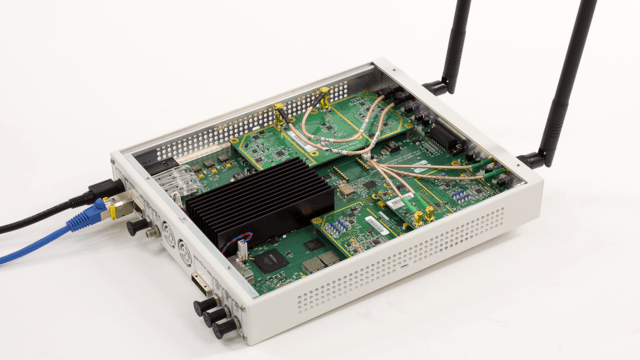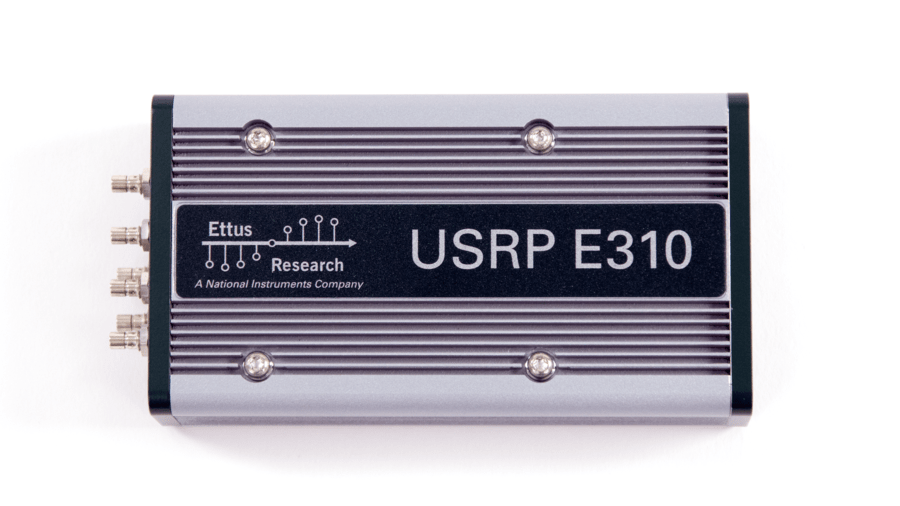What Is Software-Defined Radio?
A software-defined radio (SDR) is a wireless device that typically consists of a configurable RF front end with an FPGA or programmable system-on-chip (SoC) to perform digital functions. Commercially available SDR hardware can transmit and receive signals at different frequencies to implement wireless standards from FM radio to 5G, LTE, and WLAN.
Wireless engineers can use software-defined radio hardware as a cost-effective, real-time platform for a range of wireless engineering tasks, including:
- Over-the-air lab and field testing with live RF signals
- Rapid prototyping of custom radio functions
- Hands-on learning of wireless communications concepts and design skills
Wireless engineers can also work with various wireless standards such as 5G, LTE, WLAN, DVB-S2, and others using SDR and MATLAB® connectivity.
Using a software-defined radio together with MATLAB and Simulink® for wireless design, simulation, and analysis enables engineers and students to:
- Transmit and receive standards-based and custom-generated signals.
- Test designs in the presence of interference and other real-world conditions.
- Perform real-time signal analysis and measurement.
- Deploy, prototype, and verify custom designs on Zynq® radios using HDL and C code generation from algorithm models.
- Generate HDL code from Simulink models and deploy on supported USRP™ radios.
- Verify implementation with radio-in-the-loop tests.
- Transmit and capture signals to test wideband wireless systems and perform spectrum monitoring.
- Capture wideband signals and use them to train deep learning models for wireless applications.
MATLAB and Simulink Hardware Support for SDR
You can use MATLAB and Simulink to communicate with several popular SDR platforms to perform radio-in-the-loop testing, prototyping, and hands-on learning:
Examples and How To
Over-the-Air Testing
Prototyping
Hands-On Learning
See also: RF system, LTE tutorial, Communications Toolbox, massive MIMO, Bluetooth Toolbox, beamforming, Wireless Testbench, 5G, DVB-S2, wireless transceiver, 6G Technology: Wideband Signal Analysis in MATLAB










